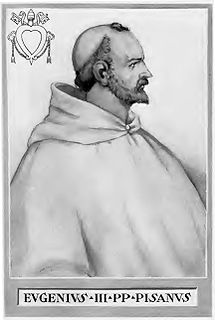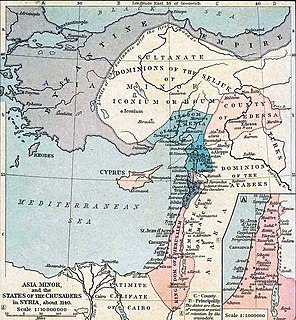The Northern Crusades or Baltic Crusades were religious wars undertaken by Catholic Christian military orders and kingdoms, primarily against the pagan Baltic, Finnic and West Slavic peoples around the southern and eastern shores of the Baltic Sea, and to a lesser extent also against Orthodox Christian Slavs. The crusades took place mostly in the 12th and 13th centuries and resulted in the subjugation and forced baptism of indigenous peoples.
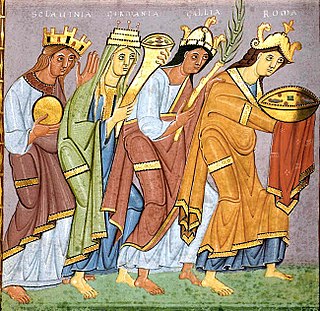
Wends is a historical name for Slavs living near Germanic settlement areas. It does not refer to a homogeneous people, but to various peoples, tribes or groups depending on where and when it is used.
The 1140s was a decade of the Julian Calendar which began on January 1, 1140, and ended on December 31, 1149.
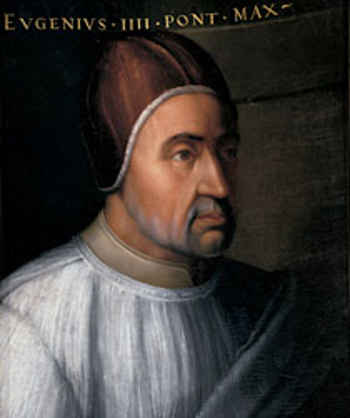
Pope Eugene IV, born Gabriele Condulmer, was Pope from 3 March 1431 to his death in 1447. He is the most recent pope to have taken the name "Eugene" upon his election.

Helmold of Bosau was a Saxon historian of the 12th century and a priest at Bosau near Plön. He was a friend of the two bishops of Oldenburg in Holstein, Vicelinus and Gerold, who did much to Christianize the Polabian Slavs.
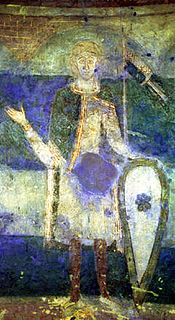
Samo founded the first recorded political union of Slavic tribes, known as Samo's Empire, stretching from Silesia to present-day Slovenia, ruling from 623 until his death in 658. According to Fredegarius, the only contemporary source, Samo was a Frankish merchant who unified several Slavic tribes against robber raids and violence by nearby settled Avars, showing such bravery and command skills in battle that he was elected as the "Slavic king". In 631, Samo successfully defended his realm against the Frankish Kingdom in the three-day Battle of Wogastisburg.

The Wendish Crusade was a military campaign in 1147, one of the Northern Crusades and a part of the Second Crusade, led primarily by the Kingdom of Germany within the Holy Roman Empire and directed against the Polabian Slavs. The Wends are made up of the Slavic tribes of Abrotrites, Rani, Liutizians, Wagarians, and Pomeranians who lived east of the River Elbe in present-day northeast Germany and Poland.
Christianization is the conversion of individuals to Christianity or the conversion of entire groups at once. Various strategies and techniques were employed in Christianization campaigns from Late Antiquity and throughout the Middle Ages. Often the conversion of the ruler was followed by the compulsory baptism of his subjects. Some were evangelization by monks or priests, organic growth within an already partly Christianized society, or by campaigns against paganism such as the conversion of pagan temples into Christian churches or the condemnation of pagan gods and practices. A strategy for Christianization was Interpretatio Christiana – the practice of converting native pagan practices and culture, pagan religious imagery, pagan sites and the pagan calendar to Christian uses, due to the Christian efforts at proselytism (evangelism) based on the Great Commission.
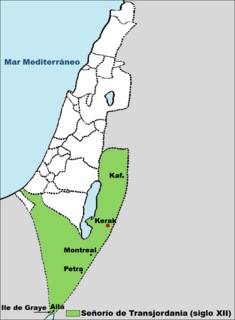
The Lordship of Oultrejordain or Oultrejourdain was the name used during the Crusades for an extensive and partly undefined region to the east of the Jordan River, an area known in ancient times as Edom and Moab. It was also referred to as Transjordan.

Polabian Slavs is a collective term applied to a number of Lechitic tribes who lived along the Elbe river in what is today Eastern Germany. The approximate territory stretched from the Baltic Sea in the north, the Saale and the Limes Saxoniae in the west, the Ore Mountains and the Western Sudetes in the south, and Poland in the east. They have also been known as Elbe Slavs or Wends. Their name derives from the Slavic po, meaning "by/next to/along", and the Slavic name for the Elbe.
Quantum praedecessores is a papal bull issued on December 1, 1145, by Pope Eugenius III, calling for a Second Crusade. It was the first papal bull issued with a crusade as its subject.

The Siege of Lisbon, from 1 July to 25 October 1147, was the military action that brought the city of Lisbon under definitive Portuguese control and expelled its Moorish overlords. The Siege of Lisbon was one of the few Christian victories of the Second Crusade—it was "the only success of the universal operation undertaken by the pilgrim army", i.e., the Second Crusade, according to the near contemporary historian Helmold, though others have questioned whether it was really part of that crusade. It is seen as a pivotal battle of the wider Reconquista.
In the Baltic Sea region, groups of pirates of Slavic descent lived dating as far back as the 8th to 14th centuries.
The Wagri, Wagiri, or Wagrians were a tribe of Polabian Slavs inhabiting Wagria, or eastern Holstein in northern Germany, from the ninth to twelfth centuries. They were a constituent tribe of the Obodrite confederacy.
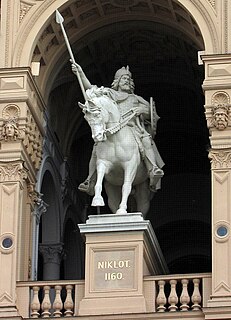
Niklot or Nyklot was a pagan chief or prince of the Slavic Obotrites and an ancestor of the House of Mecklenburg. He became chief of the Obotrite confederacy, including the Kissini and the Circipani, between the years 1130 and 1131. He remained in this position until his death in 1160. At the same time he was Lord of Schwerin, Quetzin and Malchow. For nearly 30 years he resisted Saxon princes, especially Henry the Lion during the Wendish Crusade. He fought the conversion of the pagan Polabian Slavs to Christianity.
Henry was archbishop of Mainz from 1142 to 1153.

The Council of Acre met at Palmarea, near Acre, a major city of the crusader Kingdom of Jerusalem, on 24 June 1148. The Haute Cour of Jerusalem met with recently arrived crusaders from Europe, to decide on the best target for the crusade. The Second Crusade had been called after the fall of Edessa to Zengi in 1144. In 1147, armies led by Conrad III of Germany and Louis VII of France began their separate journeys to the east. Conrad arrived at Acre in April 1148, and Louis marched south from Antioch.
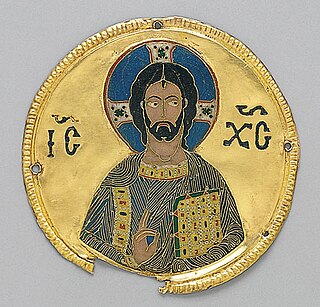
Christianity in the 12th century was marked by scholastic development and monastic reforms in the western church and a continuation of the Crusades, namely with the Second Crusade in the Holy Land.


